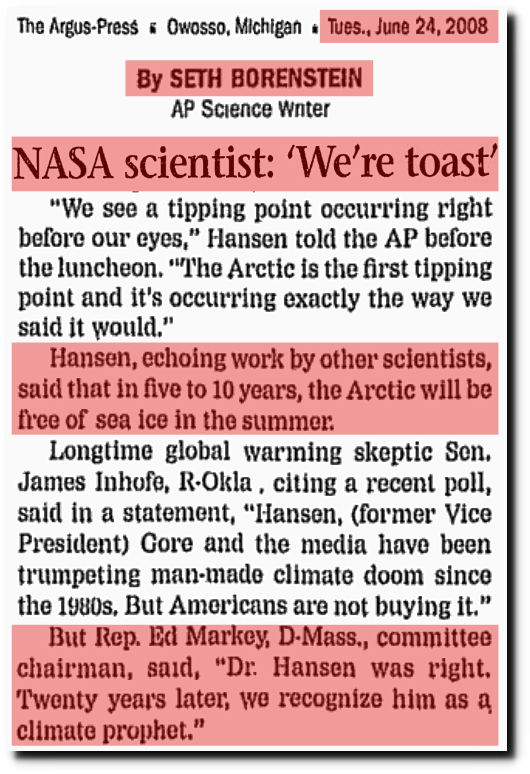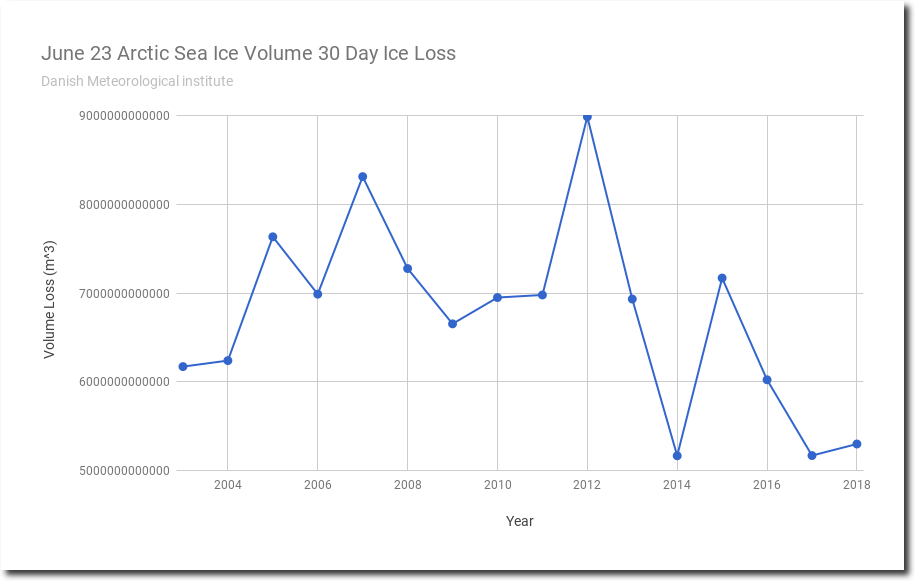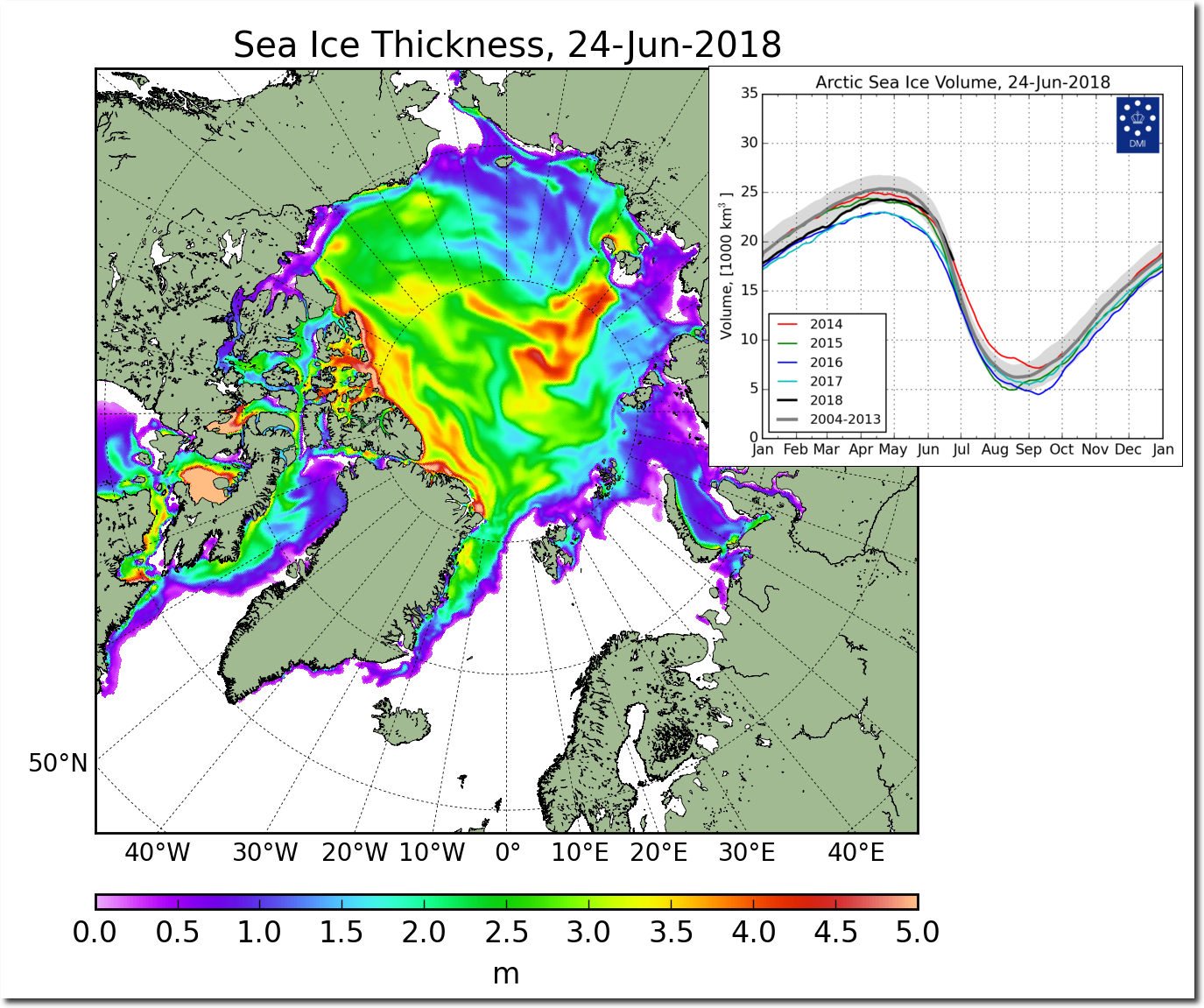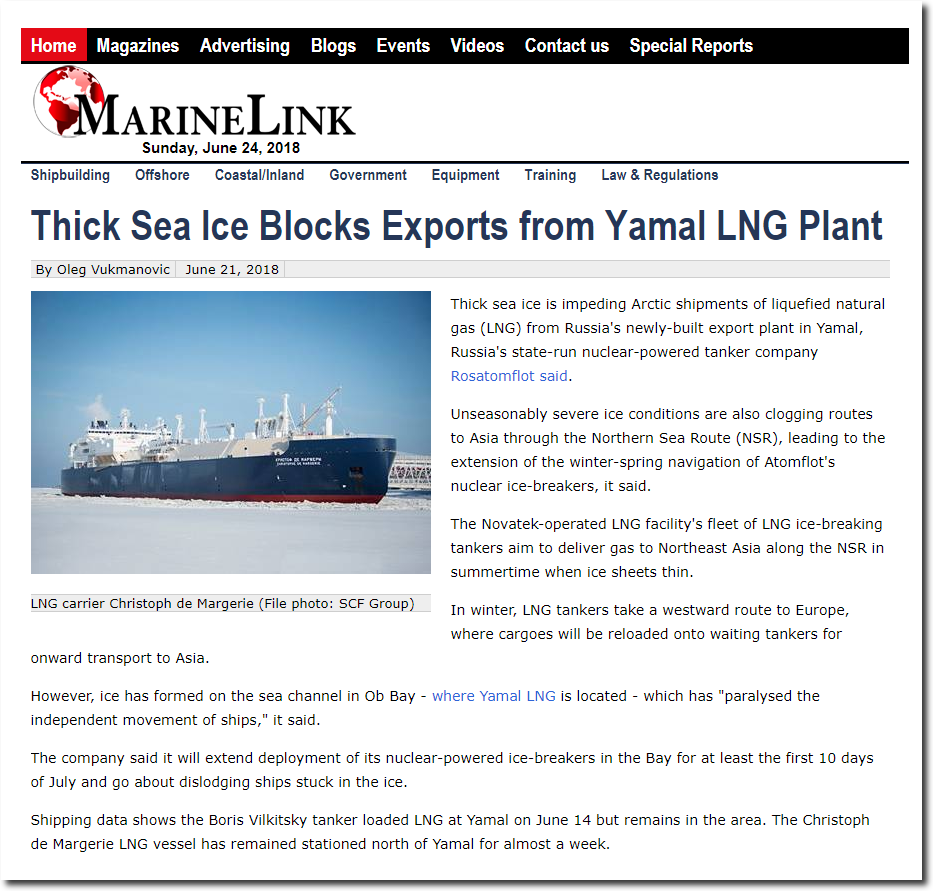The Argus-Press – Google News Archive Search
On the 10th anniversary of NASA’s ice-free in 2018 forecast, Arctic sea ice volume is the highest since 2004.
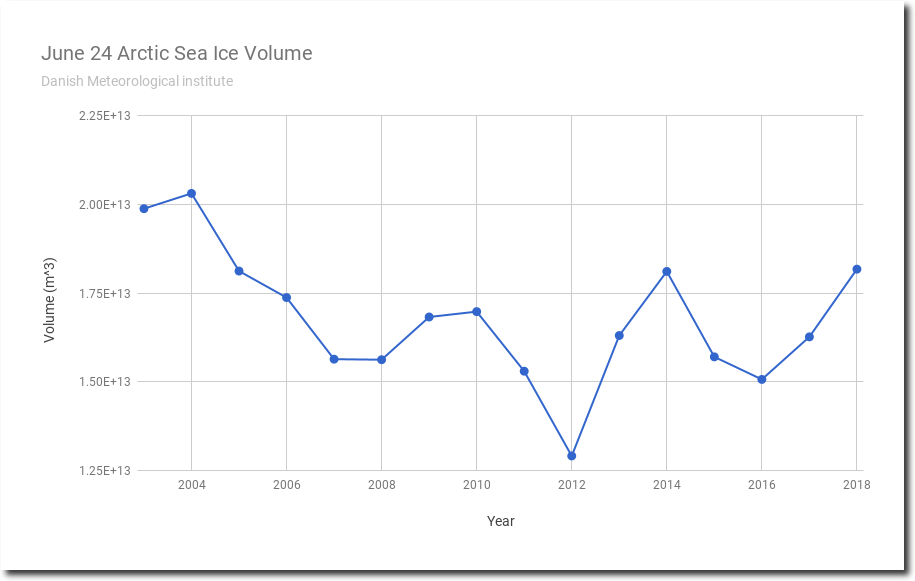
Four of the five slowest melt years have occurred during the last five years.
Thick sea ice is blocking both the Northern Sea Route and Northwest Passage.
FullSize_CICE_combine_thick_SM_EN_20180624.png (1337×1113)
Thick Sea Ice Blocks Exports From Yamal LNG Plant
James Hansen was dead wrong about all of his forecasts over the past 30 years, so fake climate scientists and the fake news press have quite predictably ramped up their lies and claim the exact opposite.

